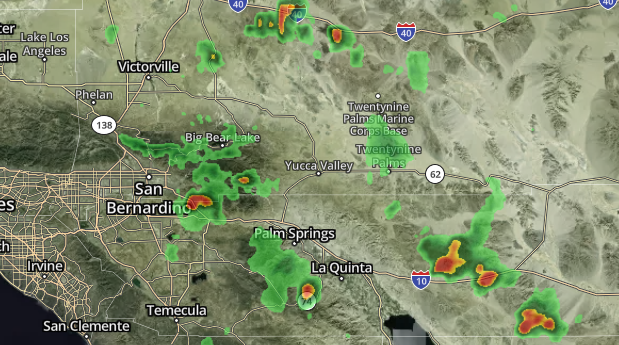Flash Flood Warnings: What They Mean And How To Stay Safe

Table of Contents
Understanding Flash Flood Warnings
What constitutes a Flash Flood Warning?
A flash flood is a rapid, violent rise in water levels, typically within six hours of heavy or excessive rainfall. Unlike regular floods, which develop more slowly, flash floods can occur with little to no warning, making them extremely dangerous. Meteorological agencies, such as the National Weather Service (NWS), issue flash flood warnings based on several criteria, including:
- Rapidly rising water levels in rivers, streams, and creeks.
- Heavy rainfall exceeding the capacity of drainage systems.
- Dam or levee failures.
- Imminent threat of flash flooding based on weather radar and other data.
It's essential to understand the difference between watches, warnings, and advisories:
- Flash Flood Watch: Conditions are favorable for flash flooding. Be prepared.
- Flash Flood Warning: Flash flooding is occurring or is imminent. Take immediate action.
- Flash Flood Advisory: Flash flooding is possible. Be aware of the potential hazard.
Where to find Flash Flood Warnings
Reliable sources for receiving flash flood warnings are crucial. Stay informed by utilizing multiple sources:
- National Weather Service (NWS) website: Check the NWS website for your specific location.
- Reputable weather apps: Download reliable weather apps like AccuWeather, The Weather Channel, or WeatherBug. Many offer customizable alerts.
- Local news channels: Your local news channels provide up-to-the-minute weather updates and warnings.
Sign up for weather alerts! Most weather services and apps allow you to receive notifications via SMS text message, email, or push notifications directly to your smartphone. This proactive approach ensures you receive immediate warnings. Remember, confirming information from multiple sources is always best practice.
Safety Measures During a Flash Flood Warning
Immediate Actions
Upon receiving a flash flood warning, act swiftly:
- Move to higher ground immediately. This is your top priority. Get to safety above the expected flood levels.
- Avoid driving or walking through floodwaters. The depth and current of floodwaters can be deceptively strong and deadly.
- Unplug electrical appliances. Protect yourself from electrocution.
- Move valuable items to a safe place. Elevate or move belongings to higher floors or secure locations.
Protecting Your Home
Protecting your property is also critical:
- Bring outdoor furniture and equipment inside. Secure loose items that could be swept away.
- Move valuable items to upper floors. Elevate furniture and possessions to prevent damage.
- Consider sandbagging if time permits. This can help protect your home from rising floodwaters.
- Know your evacuation route. Familiarize yourself with escape routes beforehand.
Driving Safety
Driving during a flash flood is extremely dangerous:
- Floodwaters can be deceptively deep and fast-moving. A few inches of water can sweep a car away.
- Never drive through flooded areas. Turn around, don't drown. This is crucial advice; it saves lives.
- If your car stalls in floodwater, get out immediately and move to higher ground. Do not attempt to restart the vehicle.
Post-Flash Flood Safety
Assessing the Damage
After the floodwaters recede:
- Exercise extreme caution when entering flood-damaged areas. Standing water may be contaminated.
- Check for structural damage to your home. Inspect foundations, walls, and roofs for cracks or weaknesses.
- Report damage to relevant authorities. Contact your local emergency services or disaster relief agencies.
Cleaning Up Safely
Cleaning up after a flash flood requires careful precautions:
- Avoid contaminated water. Use protective gear like gloves and boots.
- Address mold and mildew promptly. These can cause health problems.
- Discard damaged items properly. Follow local guidelines for disposing of flood debris.
Conclusion
Understanding flash flood warnings is vital for your safety. This article highlights the importance of knowing what constitutes a warning, where to find reliable information, and how to react appropriately before, during, and after a flash flood event. Remember the key takeaways: stay informed, take immediate action when a warning is issued, and prioritize your safety above all else. Stay safe this season by understanding flash flood warnings; be prepared for flash floods – your safety depends on it. Learn more about flash flood safety and protect your family by exploring resources from your local emergency management agency.

Featured Posts
-
 Catat Jadwal Moto Gp Inggris Rangkaian Balapan Dimulai Hari Ini
May 26, 2025
Catat Jadwal Moto Gp Inggris Rangkaian Balapan Dimulai Hari Ini
May 26, 2025 -
 A Frase Iconica De Nome Do Filme Um Legado De 20 Anos
May 26, 2025
A Frase Iconica De Nome Do Filme Um Legado De 20 Anos
May 26, 2025 -
 Jadwal Siaran Langsung Moto Gp Argentina 2025 Di Trans7 Saksikan Balapannya Di Sini
May 26, 2025
Jadwal Siaran Langsung Moto Gp Argentina 2025 Di Trans7 Saksikan Balapannya Di Sini
May 26, 2025 -
 As Monaco Quels Joueurs Pour Affronter Nice
May 26, 2025
As Monaco Quels Joueurs Pour Affronter Nice
May 26, 2025 -
 The Hells Angels A Deep Dive Into Their History And Culture
May 26, 2025
The Hells Angels A Deep Dive Into Their History And Culture
May 26, 2025
Latest Posts
-
 Fridays Euro Millions Draw E245 Million Jackpot Live Updates
May 28, 2025
Fridays Euro Millions Draw E245 Million Jackpot Live Updates
May 28, 2025 -
 Euro Millions Friday Draw Follow The E245m Jackpot Live
May 28, 2025
Euro Millions Friday Draw Follow The E245m Jackpot Live
May 28, 2025 -
 Live Euro Millions Draw E245 Million Jackpot Up For Grabs This Friday
May 28, 2025
Live Euro Millions Draw E245 Million Jackpot Up For Grabs This Friday
May 28, 2025 -
 Claim Your 300 000 Euro Millions Winnings Five Days Left
May 28, 2025
Claim Your 300 000 Euro Millions Winnings Five Days Left
May 28, 2025 -
 Irish Lottery Winners Lucky Break E5k Prize Multiplied To E255k
May 28, 2025
Irish Lottery Winners Lucky Break E5k Prize Multiplied To E255k
May 28, 2025
